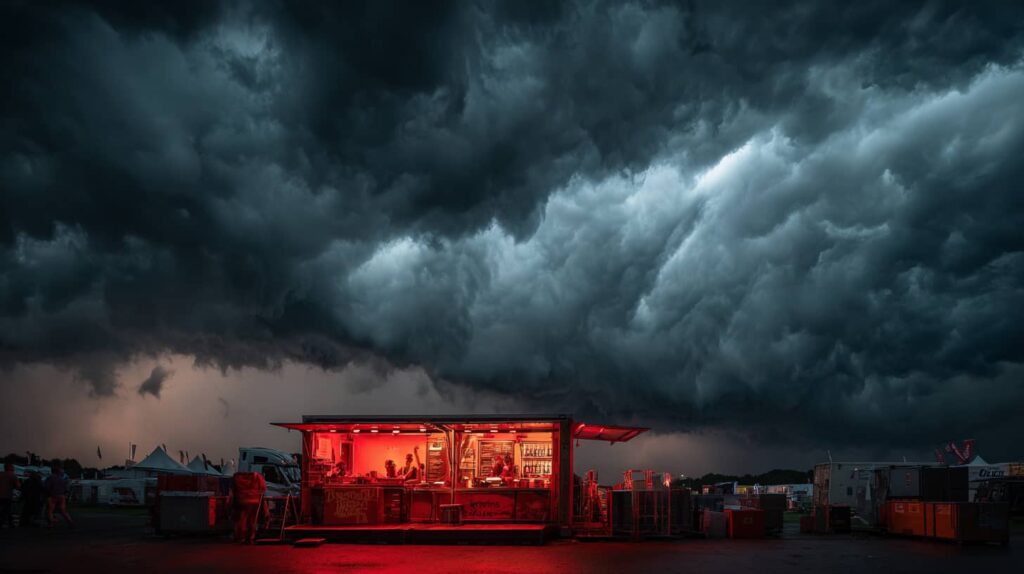25,000 people, three days, one site. What looks like the ultimate party dream turns out to be a financial nightmare for many caterers. Why do even experienced professionals fail at festival catering? The truth lies in details that nobody can foresee.
The fairytale bill
A typical scenario: 40,000 expected visitors, average catering expenditure of 15 euros per person. That's 600,000 euros in potential turnover. Sounds tempting, doesn't it?
The reality is different. Of these 600,000 euros, often less than 5% remains as profit after stand fees, staff costs, loss of goods and unforeseeable expenses. Some organisers even go home with losses.
The personnel dilemma
Finding festival staff is like playing Russian roulette. Who wants to work three days in a row at 35°C in the blazing sun or pouring rain? The result: unskilled labour, high staff turnover and a massive loss of quality.
A festival organiser from the south reports: "We had 12 employees on the first day. On the third day there were still 4. The others simply didn't turn up."
The logistics trap
What works in the restaurant fails on the festival site. No cold chain, limited storage facilities, no running water. Mixing cocktails becomes a feat of strength when the ice has melted after two hours and the power generator fails.
The supply problem is particularly tricky. If you run out of rum on a Saturday evening, no amount of wholesale will help. The party goes on, but your bar stands still.
The weather war
Rain turns the festival site into a swamp. Heat makes drinks warm and unsaleable. Wind sweeps away ingredients. Thunderstorms force closure. The weather determines success or failure - and cannot be controlled.
At a festival in northern Germany, a storm turned the entire catering infrastructure into scrap metal. Damage: 50,000 euros. Insurance did not pay out.
The vending machine revolution
Here comes the surprising twist: Modern cocktail machines solve many of these problems in one fell swoop. While traditional festival caterers struggle with chaos, automated systems consistently serve perfect drinks.
The advantages are dramatic:
- No more personnel drama
- Weather-independent operation
- Zero dispensing loss
- Consistent quality around the clock
The hidden cost traps
What festival newcomers underestimate: The small items add up to large sums. Stand fees are just the beginning. There are also electricity costs, security services, waste disposal, water connection and countless "small" fees.
A mobile restaurateur calculates: "I pay 15,000 euros for a 3-day stand - before I've even sold a single drink."
Technology as a lifesaver
Automated cocktail machines are fundamentally changing the festival business. Instead of working with 8 stressed bartenders, 2 relaxed service staff are enough. Instead of complaining about loss of goods, the machine produces exactly as required.
The figures speak for themselves: 300% less labour costs, 90% less loss of goods, 500% higher efficiency at peak times.
The psychology of the festival guest
Festival visitors have different expectations than restaurant guests. They want to be served quickly, cheaply and yet to a high standard. Long waiting times kill the mood. Bad drinks ruin the experience.
Automated systems fulfil all three criteria perfectly: lightning-fast, cost-efficient and with consistent top quality.
The future of festival catering
The dark side of festival catering is becoming lighter - thanks to intelligent technology. Those who continue to rely on traditional methods are fighting insurmountable obstacles. Those who switch to automation turn problems into competitive advantages.
The question is not whether automated systems will prevail, but how quickly smart organisers will change over.
Festival catering doesn't have to remain the dark side - it can become a goldmine.
